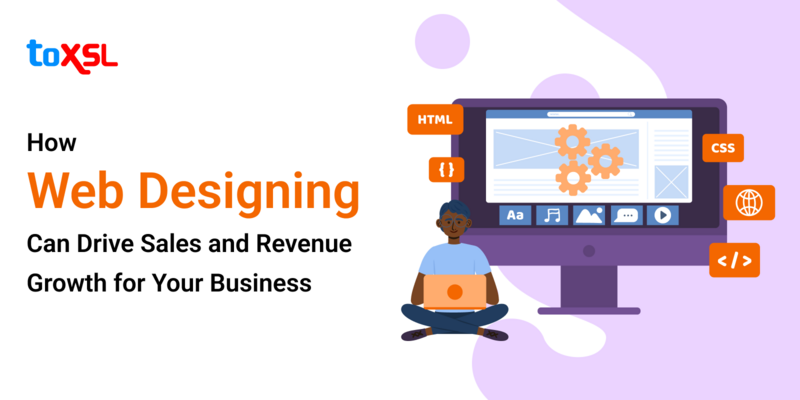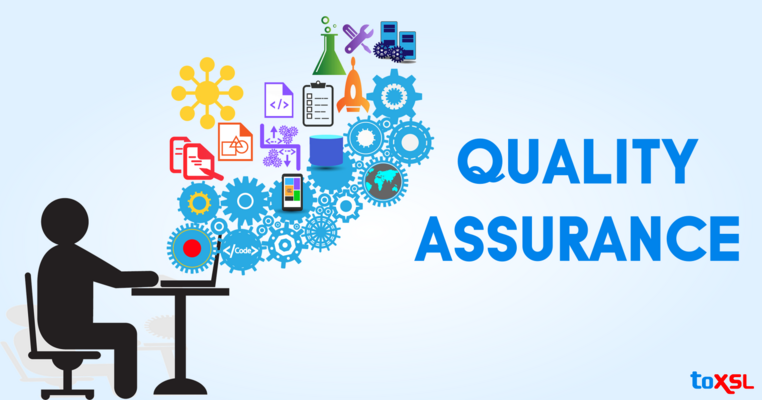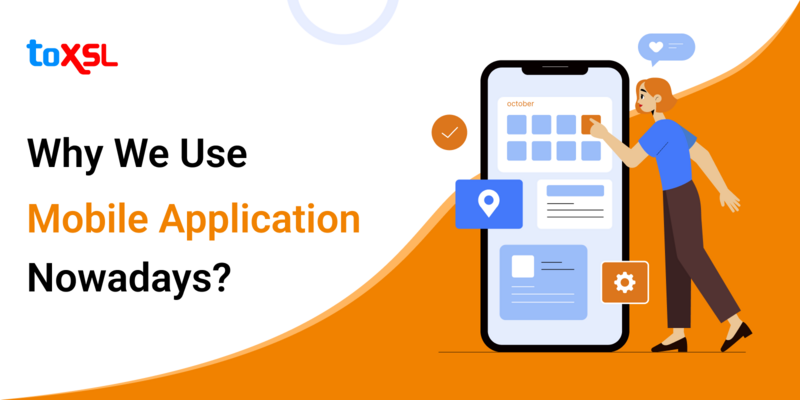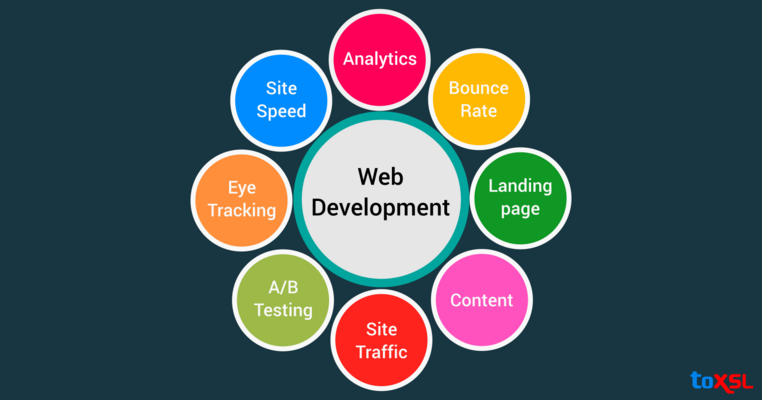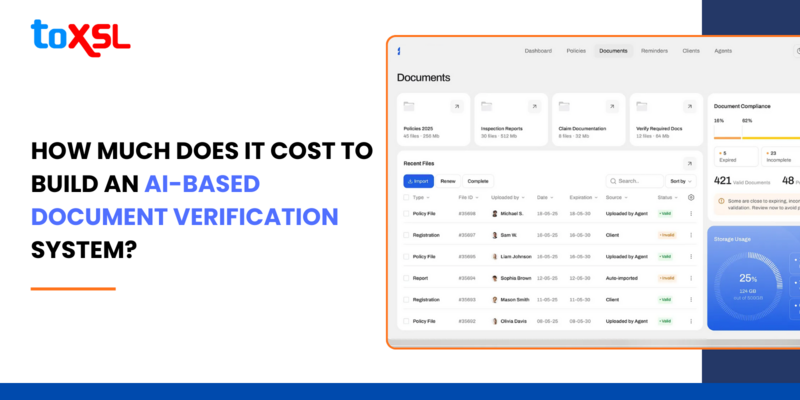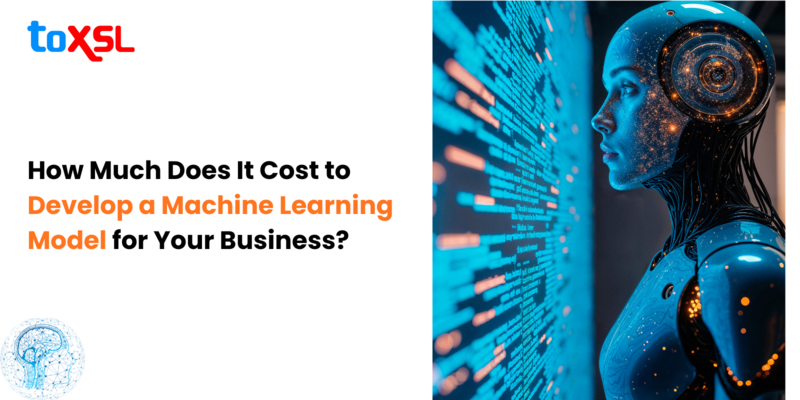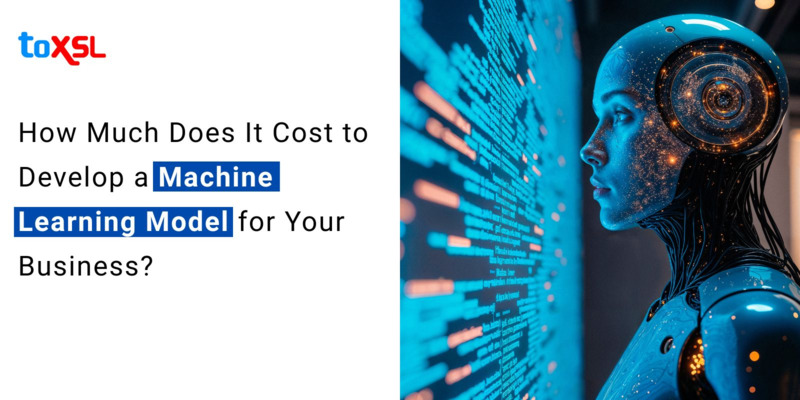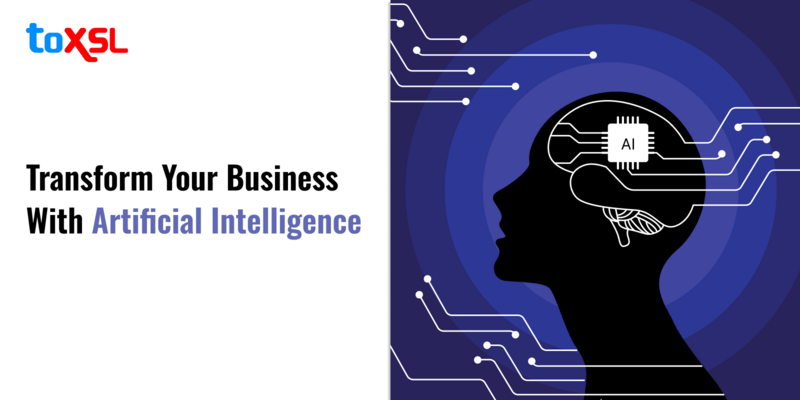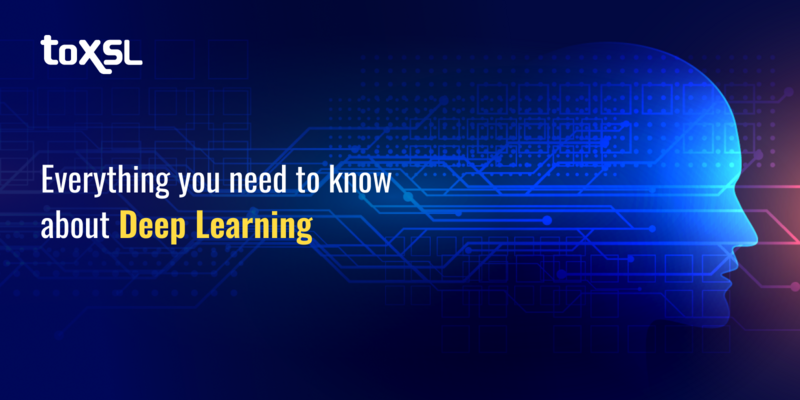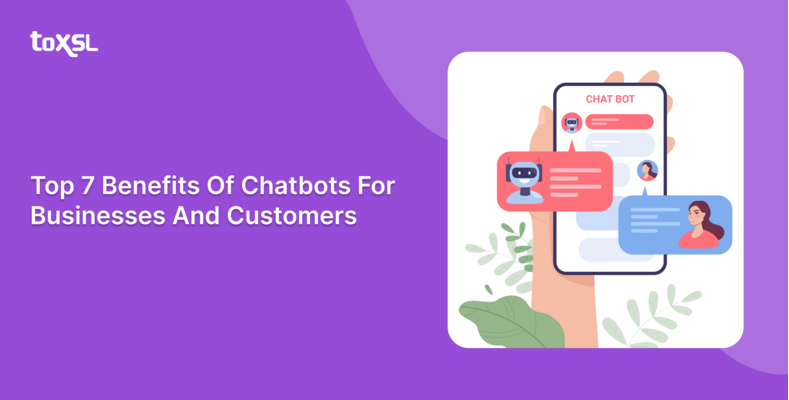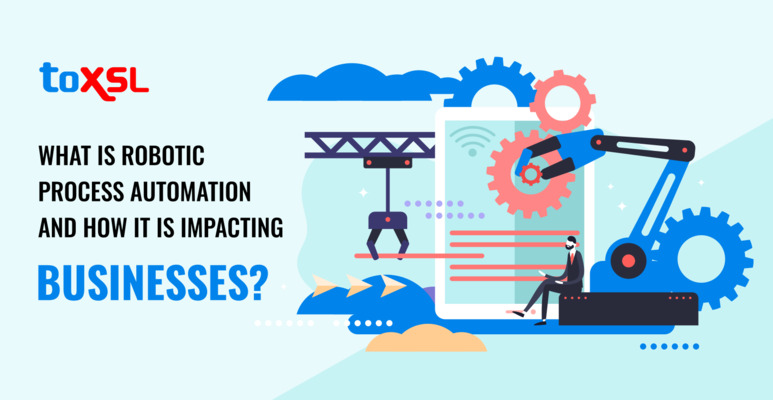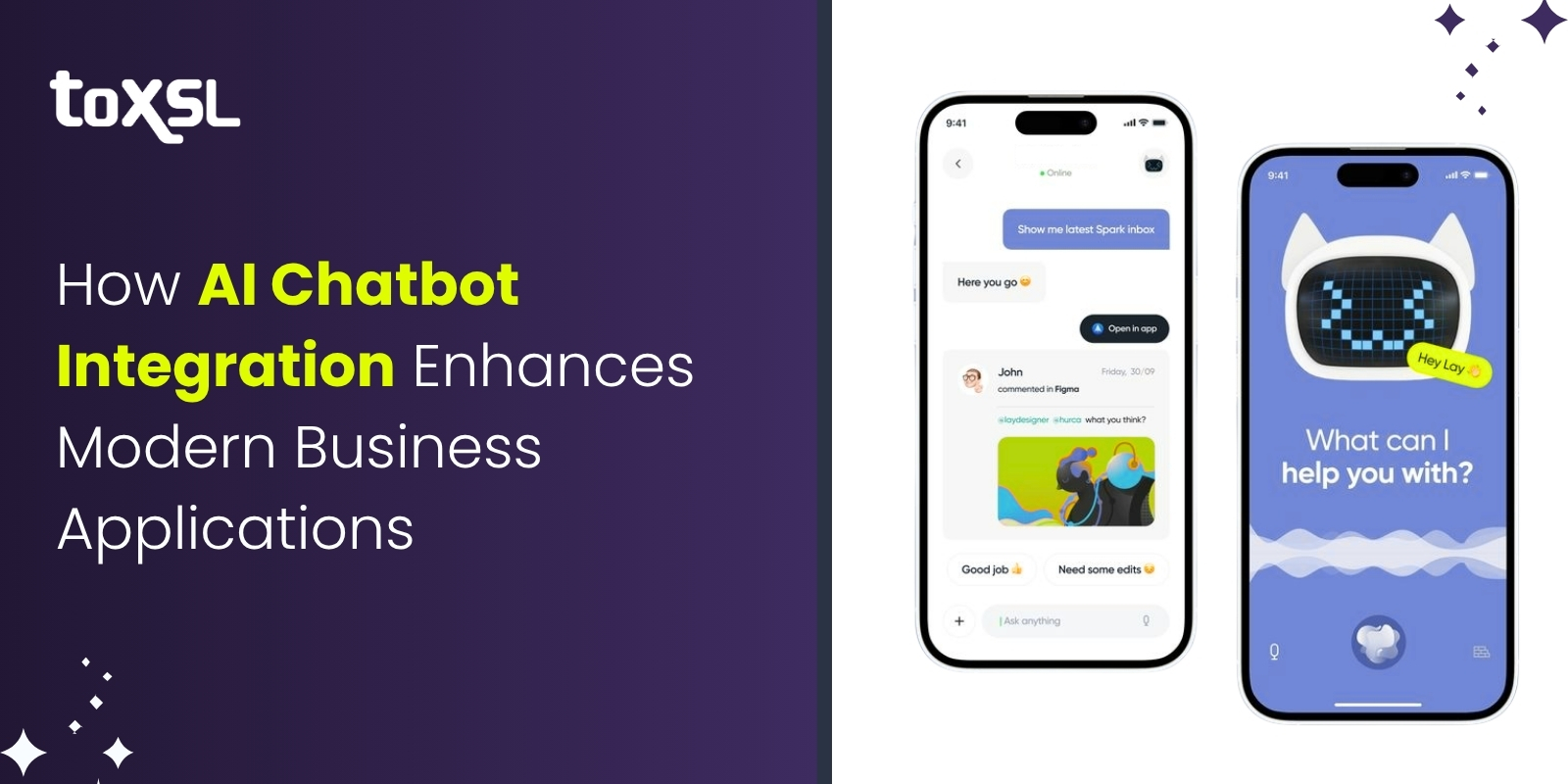
Today, AI chatbots have become the need of the hour for every business. According to Pilvo, AI chatbots are used in sales, HR, and healthcare, helping them increase their ROI. According to Gartner, agentic AI is set to transform customer service, reshaping in-person interactions to embrace automation. The global AI chatbot market is expected to reach $46.6 billion by 2029, growing at a CAGR of 24.5%. In today’s fast-changing digital era, businesses are constantly looking for smarter ways to connect with their customers. AI chatbots have emerged as the ultimate solution, transforming how brands engage, respond, and deliver value instantly. These intelligent assistants are no longer a luxury — they’re a necessity for businesses aiming to stay ahead in a competitive marketplace.
Key Takeaways
AI chatbots provide seamless 24/7 customer engagement, improving response times and satisfaction.
Integration requires technical, linguistic, and business alignment to ensure chatbot effectiveness.
Core chatbot components include an NLP engine, dialogue management, a user interface, and an integration layer.
AI chatbots automate lead generation and qualification, accelerating sales cycles.
Customization of marketing campaigns through chatbots increases conversion rates.
Impact of AI-Chatbots on Modern Business Applications
AI chatbots are changing the way businesses work and talk to their customers. These smart programs use artificial intelligence to answer questions, give information, and help out anytime, day or night.
Better Customer Service: AI chatbots can talk to customers 24 hours a day, 7 days a week. They reply quickly, which makes customers happy because they don’t have to wait. These chatbots understand normal, everyday language, so talking to them feels natural. They work on websites, apps, and social media, giving customers help wherever they are.
Helping Sales and Marketing: In sales, chatbots can ask questions and find out what customers want. They suggest products, answer questions, and even book meetings with sales teams. This makes buying faster and easier. For marketing, chatbots learn what customers like and send them special offers that fit their interests. This helps businesses connect better with their audience.
Making Customer Support Easier: Chatbots can handle many questions on their own, so human workers don’t have to do all the boring, repeated tasks. If a problem is tricky, the chatbot can pass it to a person to solve. They can also talk in many languages, helping businesses serve customers worldwide.
Saving Time and Money: Chatbots automate simple jobs like tracking orders or setting up appointments. They connect with other business systems to get the right information and complete tasks automatically. This saves time and lets businesses focus on bigger goals.
Getting Smarter Over Time: AI chatbots keep learning from the conversations they have. They get better at understanding questions and giving correct answers. This means they improve day by day and can handle more difficult requests in the future.
AI Chatbot Integration: Step-by-step Process
AI chatbots have become central to how businesses increase their sales. So, if you're looking to integrate an AI-driven chatbot into your website, it can turn into one of the best decisions for your business.
Define Your Objective: The first step in AI chatbot integration is to understand and define your needs. This involves more than defining your business requirement. Ensure to assess your infrastructure and discuss with your stakeholders. This will help you understand how this integration is going to impact your business. Defining objectives also includes your budget consideration and will give an idea of the team you need to hire.
Design Chatbot Interactions: Before you choose the technology or begin coding or adding your chatbot, Chatbot interactions help to plan the kinds of talks you want the bot to handle. This shows you how simple or complex your bot should be and if you need AI for it. A very simple bot, which only answers a few questions, will need different technology than a full chatbot like ChatGPT.
Choose the Right Technology: There are numerous ways to ai integrate a chatbot into your business. Ensure to pick the tools and platforms that fit your chatbot’s needs. A simple chatbot may require basic software, while a complex one with AI features will require advanced technology.
The Integration Process: Integrate the chatbot into your existing system carefully. Ensure that it communicates well with your website, app, or other software without causing issues.
Design the User Interface: Develop an easy and clear way for users to interact with the chatbot. The design should be friendly, simple, and work well on all devices.
Testing and Deployment: Test the chatbot to find and fix any issues before launch. After testing, deploy it so users can start using it. Keep watching how it works and improve it as needed.
Also Read: How to Choose the Right AI Model For Your Application
AI Chatbot Workflow: How Smart Conversations Happen

The functioning of an AI chatbot follows a smooth, intelligent workflow designed to deliver fast and accurate responses. Here's how the process works:
User Query: The interaction begins when a user asks a question or sends a message through a website, app, or social platform.
Chatbot: The chatbot receives the message and prepares it for understanding by passing it to the NLP engine.
NLP Engine: The Natural Language Processing (NLP) engine analyzes the text, detects intent, and identifies key entities or keywords.
Knowledge Base: The system searches the knowledge base for the most relevant information or solution to the user’s query.
Intelligent Response: Based on the analysis and data, the chatbot generates a natural, human-like response using Natural Language Generation (NLG).
Feedback Loop: The chatbot learns from every interaction, improving its accuracy and understanding over time through AI training and user feedback.
Real-World Use Cases of AI Chatbots

AI chatbots have become indispensable across industries by automating communication, improving efficiency, and delivering real-time solutions to customers. Their flexibility and intelligence allow businesses to cater to diverse use cases and customer journeys. Below are some detailed examples of how chatbots are transforming different industries:
Industry | Use Case & Description |
|---|---|
E-commerce | AI chatbots assist customers with product recommendations based on browsing history and preferences, handle order tracking, provide instant answers to FAQs, and manage refunds or returns seamlessly. They also engage customers with personalized upselling and cross-selling suggestions, improving conversion rates and sales. |
Healthcare | In healthcare, chatbots schedule appointments, send reminders for medication or follow-ups, and provide instant responses to basic health-related queries. Some advanced systems even offer symptom analysis and route patients to the right specialists — ensuring faster care delivery and improved patient satisfaction. |
Banking & Finance | Chatbots simplify transactions by helping users check balances, review transactions, or get loan details. They send fraud alerts, provide personalized financial advice, and assist with credit card applications. Their 24/7 availability ensures customers get reliable support without waiting for business hours. |
Education | Educational chatbots act as virtual assistants for students and staff. They answer admission queries, recommend courses, track progress, and share study resources. Institutions use them to create interactive learning experiences and enhance engagement in remote education environments. |
Travel & Hospitality | AI chatbots in travel and hospitality act as virtual concierges, assisting with flight bookings, hotel reservations, itinerary changes, and local travel information. They also provide multilingual support, ensuring travelers enjoy seamless service anywhere in the world. |
What are the Components of an AI-Chatbot?
Any chatbot consists of seven components, which are as follows:
Natural Language Processing (NLP)
AI-powered Chatbots convert text and speech into machine language, understandable using Natural Language Processing (NLP). The entire NLP process involves several steps:
Tokenization: Tokenization is a process of breaking a string into smaller parts called "tokens."
Normalization: Normalization is also called syntactic analysis. It is a process of fixing spelling mistakes and changing words into their normal form.
Entity Recognition: Entity Recognition is a process of looking step looks for important words to find out what the conversation is about.
Semantic Analysis: This means understanding the meaning of the whole sentence by looking at each word and how they work together.
Natural Language Understanding (NLU)
Natural Language Understanding plays a major role in making machines understand the meaning of spoken language by finding patterns in unstructured verbal input.
Dictionary: A dictionary that helps find the meaning of each word.
Parser: A parser that checks if the sentence follows the language rules.
Grammar Rules: Grammar rules that break the sentence into parts based on structure and punctuation.
Knowledge Base: A knowledge base is a place where information is stored. The chatbot uses this information to answer questions from users.
Data Storage: Chatbot developers may decide to save conversations to help with customer service, training the bot, and testing it.
Dialogue Manager: A dialogue manager controls how the conversation flows between the user and the chatbot.
Natural Language Generation: (NLG) Natural language generation (NLG) refers to converting machine data into readable text for humans.
User Interfaces: Conversational user interfaces are the front end of a chatbot that allows users to communicate via text or voice-based assistants.
How Do AI Chatbots Benefit Sales, Marketing, and Customer Service Functions?
AI chatbots are like friendly helpers available all the time, making sales, marketing, and customer service smarter and easier for businesses.
How AI Chatbots Help Sales: AI chatbots talk to customers anytime, day or night, to understand what they want and suggest the best products or services.
Making Marketing More Fun and Smart: AI chatbots can make marketing feel personal, like having a conversation with a friend.
Bringing Smiles to Customer Service: When customers need help, AI chatbots jump in right away. No waiting! They quickly answer common questions or fix simple issues.
How Much Does Chatbot App Development Cost
AI chatbot app development cost depends on your business needs and complexity. Simple chatbots can cost less and save money, while custom, enterprise-level solutions need heavy investment but offer richer experiences and deeper integration possibilities.
| Chatbot Type | Development Cost Range | Features & Description | Ongoing Costs |
|---|---|---|---|
| Basic FAQ/Rule-Based Chatbot | $3,000 – $15,000 | Simple text responses, single platform | Maintenance 15-25% of build/year |
| NLP-Driven Chatbot | $15,000 – $40,000 | Natural language understanding, basic integrations | Hosting & APIs $500–$10,000/month |
| Advanced AI/ML Chatbot | $40,000 – $150,000+ | Context, personalization, voice, analytics, multi-channel | Higher maintenance and API use |
| Enterprise Multi-Channel Chatbot | $100,000 – $250,000+ | Omnichannel, API/webhook integration, compliance, security | Significant operational costs |
Key Features of AI Chatbot Integration in Modern Businesses
Feature | Description |
|---|---|
24/7 Customer Engagement | AI chatbots provide instant responses to customers anytime, improving accessibility and customer satisfaction without human involvement. |
Personalized User Experience | Chatbots analyze user preferences and behavior to offer personalized product suggestions, content, and support experiences. |
Seamless Multichannel Integration | Chatbots work across websites, apps, and social media to deliver consistent, unified communication experiences on every platform. |
Natural Language Processing (NLP) | With NLP, chatbots understand human language naturally, ensuring realistic and human-like interactions with users. |
Automated Lead Generation and Qualification | Chatbots engage visitors, collect information, and qualify leads automatically, helping sales teams focus on high-potential prospects. |
Efficient Query Resolution | They handle repetitive customer queries instantly and transfer complex cases to human agents when needed. |
Cost and Time Efficiency | By automating routine processes, chatbots help reduce labor costs and save valuable business time. |
Data-Driven Insights and Analytics | Chatbots collect and analyze user data to help businesses make informed marketing and operational decisions. |
Scalability and Flexibility | They can handle thousands of simultaneous conversations efficiently, especially during peak hours. |
Continuous Learning and Improvement | Using machine learning, chatbots continuously enhance accuracy and improve user experiences based on feedback. |
Future of AI Chatbots
The next generation of AI chatbots will go far beyond simple question-answer models. They are evolving into hyper-personalized, emotionally intelligent, and predictive digital companions that understand context, tone, and even user emotions.
In the near future, AI chatbots will integrate more deeply with IoT devices, cloud systems, and advanced analytics platforms, allowing them to take autonomous actions — like adjusting smart home devices, making transactions, or handling complex decision-making tasks. Businesses will soon leverage chatbots not just for customer support but as strategic partners capable of improving operations, predicting trends, and driving innovation.
Also Read: Custom AI Model Development vs Using Pre-Trained Models
Challenges in AI Chatbot Integration
Despite their benefits, integrating AI chatbots into business systems comes with its set of challenges. Recognizing these issues helps organizations plan better and implement chatbots effectively.
Data Privacy & Security: Handling sensitive user data while ensuring compliance with global data protection laws like GDPR or HIPAA is a top challenge.
Understanding Context: Chatbots often struggle with complex queries that require deep context or emotional understanding, affecting user satisfaction.
Legacy System Integration: Many businesses rely on outdated systems that make it difficult to integrate modern AI solutions smoothly.
Maintaining Tone Consistency: Ensuring the chatbot communicates with a consistent tone that aligns with the brand voice is crucial for trust and credibility.
Continuous Learning: AI chatbots require regular updates and training to stay relevant and effective as language, products, and user expectations evolve.
Technology Stack Used in Chatbot Development
AI chatbot development requires the use of advanced programming languages, frameworks, and tools to ensure precision, flexibility, and seamless integration. Here’s a breakdown of commonly used technologies adopted by IT consulting firms like ToXSL Technologies:
| Category | Technologies / Tools |
|---|---|
| Programming Languages | Python, JavaScript, Node.js – for backend logic and AI algorithms. |
| Frameworks | Dialogflow, Rasa, Microsoft Bot Framework, IBM Watson – for building conversational flows and NLP integration. |
| AI / NLP Tools | TensorFlow, spaCy, OpenAI APIs – for training and fine-tuning language models to enhance chatbot intelligence. |
| Databases | MongoDB, MySQL – for storing user data, preferences, and chat logs. |
| Integrations | Slack, WhatsApp, Facebook Messenger, CRM Tools – for expanding chatbot reach across communication platforms. |
Why Choose ToXSL Technologies for AI Chatbot Development
Choosing the right development partner is essential for a successful chatbot project. ToXSL Technologies stands out as a trusted leader in AI-driven chatbot solutions with proven expertise in building scalable, intelligent, and user-focused systems.
Here’s why businesses choose ToXSL:
Proven Expertise: A team of skilled developers and AI experts specializing in Natural Language Processing (NLP) and conversational AI.
Customized Solutions: Every chatbot is designed to align with your business model, customer journey, and long-term goals.
Multi-Platform Integration: Chatbots that work seamlessly across web, mobile, and social platforms, ensuring consistent user experiences.
End-to-End Services: From ideation and development to deployment and post-launch support, ToXSL provides complete lifecycle management.
Client-Centric Approach: Focused on delivering measurable business outcomes — from improved efficiency to enhanced customer engagement and ROI.
To Summarize
In summary, most businesses today have an online presence, and leveraging AI chatbots can help them boost sales and improve their brand’s reputation. Also, the entire process is seamless and can help you enhance customer support and automate responses. ToXSL Technologies is a leading Chatbot development company, helping businesses worldwide automate their processes. So, what are you waiting for? Start building your AI-driven chatbot today, and unlock the potential of AI-driven chatbots.
Are you ready to take your business to the next level with AI-powered chatbots? Partner with ToXSL Technologies to build intelligent, scalable, and result-driven chatbot solutions that enhance customer experience and drive business growth. Get in touch today to discuss your AI chatbot requirements and start your journey toward digital innovation with ToXSL!
Frequently Asked Questions
1. How long does it take to integrate an AI chatbot with existing business systems?
Integration time depends on complexity, ranging from a few weeks for simple FAQ bots to a few months for advanced setups involving multiple systems and custom AI training.
2. Can AI chatbots handle multiple languages?
Yes, many AI chatbots support multiple languages and can switch between them within conversations.
3. What security measures should be considered when deploying AI chatbots?
Security involves data encryption, secure user authentication, access controls, and compliance with data privacy laws such as GDPR.
4. Do AI chatbots replace human agents entirely?
No, chatbots handle routine tasks and common queries, freeing human agents to focus on complex issues.
5. Can AI chatbots be integrated with social media platforms?
Yes, AI chatbots integrate with platforms like Facebook Messenger, WhatsApp, and Twitter to provide direct, automated customer engagement.




